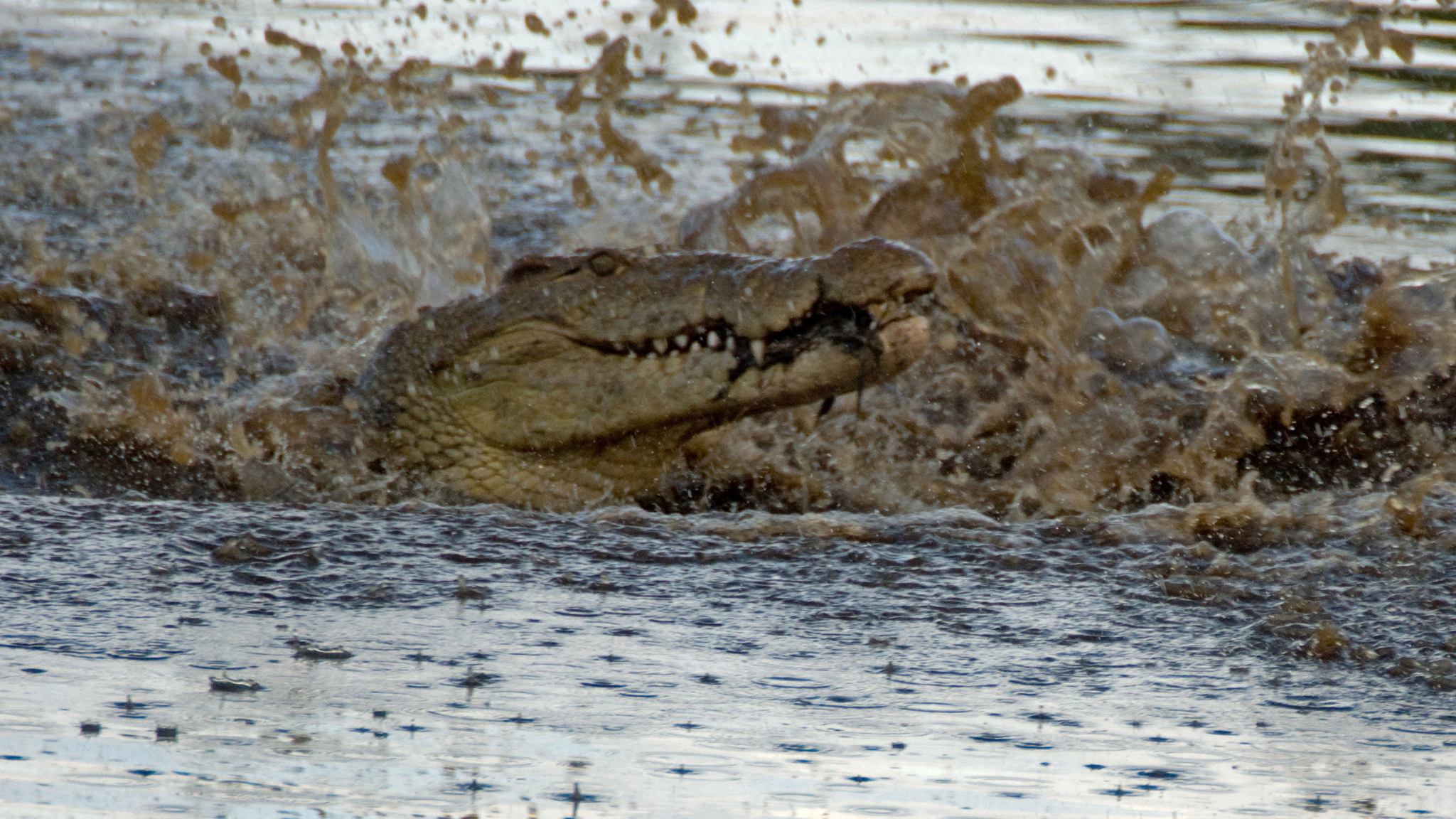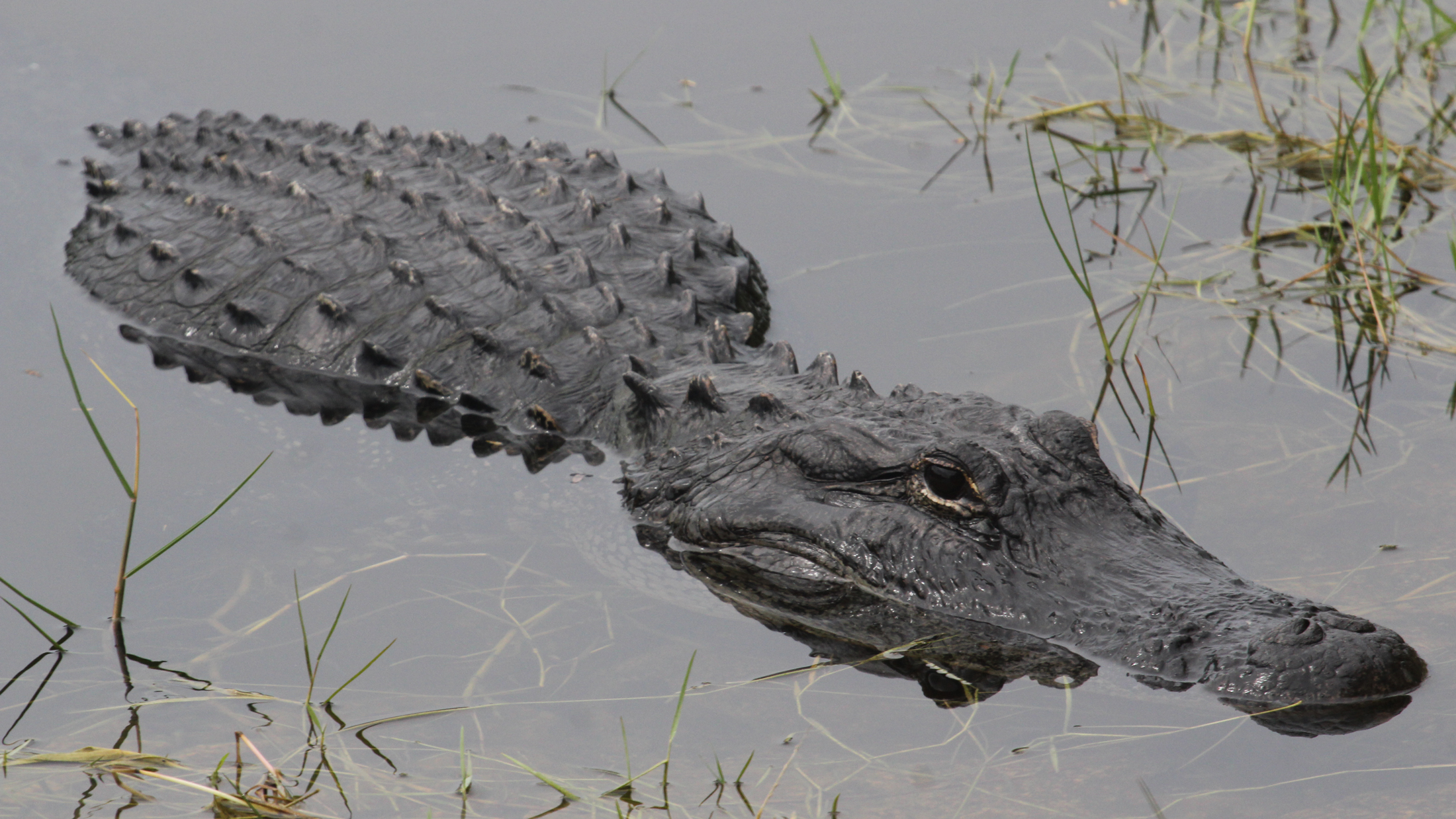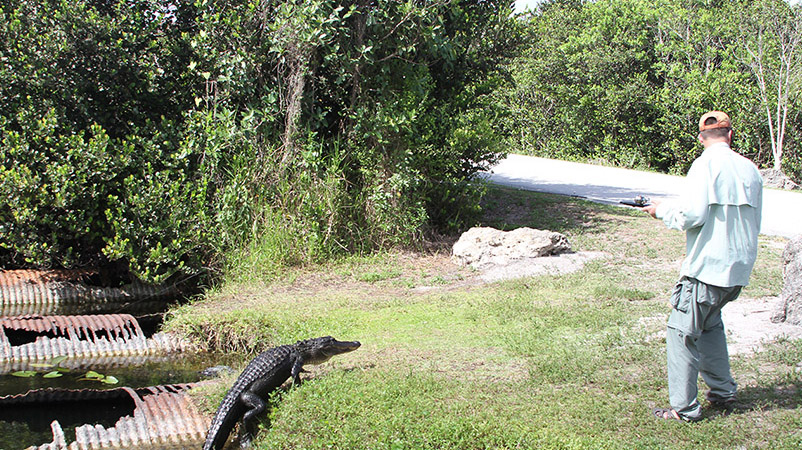Encounters with the Order Crocodilia – crocodiles, alligators, caimans and gharials – have been among my most memorable wildlife encounters.
I’ve traveled widely to spot large predators in the wild, from grizzly bears to lions to great white sharks. Upon seeing one of these beasts, the usual reaction is awe, not fear. But a crocodile? There’s something viscerally unsettling about those reptilian eyes and the obvious power. See a big Nile crocodile and it’s hard to think of yourself as anything more than dinner, at least if you get in the river.
Not all crocodilians are dangerous, of course. But I’ve found seeing them to be always memorable: they’re found in some of the coolest river and wetland environments in the world.
The naturalist Vladimir Dinets has viewed and studied every species of wild crocodilian. If you want more on these fascinating creatures, I’d highly recommend his book Dragon Songs, which is full of hard-core expeditions in search of elusive creatures.
Some species are easy to see in the right places. Here are five places to get your crocodile fix.
Top 10 List
-
Crocodiles of the Serengeti
A Moveable Feast

A Nile Crocodile crushing a captured Wildebeest in Serengeti National Park. Photo © Rainer Voegeli/Flickr through a Creative Commons license You’ve seen the nature documentaries: the herds of panicked wildebeest lunge across the river, trampling each other to get to the other side. And then an explosion of water as a gigantic Nile crocodile pulls a struggling creature underwater. It’s one of the most dramatic – and documented – predation events on earth.
It’s also very difficult to predict when the wildebeest cross the Grumeti River. No matter. Go to the Serengeti and you’ll see the big crocs resting along the river banks, as hippos swim nearby. They’re impressive creatures, and you will have absolutely no temptation to go in the water.
Bonus Creatures: A million wildebeest can’t be wrong. You’ll also see a parade of predators following them, including lions, cheetahs, spotted hyenas and leopards. Elephants, buffalo, zebras, giraffes and long list of other iconic wildlife make northern Tanzania the greatest wildlife show on earth.
-
Gators in the Glades
A Conservation Success

American alligator. Photo © Matt Miller/TNC By the 1960s, hunters had decimated American alligator populations, harvesting them for their skins. Conservationists feared extinction, but protection under the Endangered Species Act and effective conservation measures allowed the species to rebound magnificently. They were delisted in 1987.
Perhaps nowhere is this comeback more evident than in the Florida Everglades, where gators large and small are a frequent site in wetlands and canals. I admit my gator encounters rank among my most unnerving wildlife encounters.


Last year, I traveled there to catch unusual freshwater fish species. And the fishing was spectacular; I rarely had to wait five minutes for a bite. But I soon learned that fighting a fish drew alligators like a dinner bell. I had to reel quickly, and stay away from the bank. On flat ground, gators large and small even charged – often to the great entertainment of tourists. It added a new level of excitement to a fishing trip.
Bonus Creatures: The Everglades is great for birding, of course. And there’s an appealing list of small mammals, although they’re harder to spot due to the diets of introduced pythons. Giant softshell turtles are a frequently seen and equally impressive reptile. And for anglers, it’s a definite bucket list destination. Hundreds of Florida gar appeal to my love of weird fish, and there’s also an array of saltwater and freshwater specialties.
-
Caimans in the Pantanal
The Guarantee

Caimans. Photo © Matt Miller/TNC There are few guarantees in wildlife viewing. But if you go to Brazil’s Pantanal in the dry season and miss spectacled caimans, it’s time to take up golf. Another stunning conservation success, spectacled caimans have recovered from the hide trade and now exist in almost unfathomable numbers.
The Pantanal is one of the world’s largest wetland areas. When it dries up (in August and September each year), fish are trapped in pools, which in turn draw thousands of fish-eating birds and huge numbers of caimans. You can’t miss them. You really can’t.
Another great way to experience the caiman spectacle is on a night safari. Shine a spotlight over a wetland and it looks like stars in the sky. Those are caiman eyes. Thousands of caiman eyes.
Bonus Creatures: Go in deep enough, and you have a realistic chance of spotting a jaguar. There are hundreds of capybaras, the world’s largest rodent, and giant anteaters, monkeys, peccaries and more. For many, the biggest draw will be the numbers and varieties of birds.
-
Gharials of Chambal
Wildlife Spotting Near the Taj Mahal

Gharial at the Chambal Safari Lodge. Photo © Patty McGann/Flickr through a Creative Commons license While only a couple of hours from one of the world’s greatest and best-known tourist attractions, the Taj Mahal, Chambal Sanctuary only attracts a small number of hard-core naturalists each year.
The area is home to many wildlife specialties, including two crocodilians that can be seen on most trips. The mugger crocodile is an impressive beast, but for me the real draw is the gharial. This crocodile poses no risk to humans: it has a fantastically weird snout, thin and toothy for catching fish. To my mind, it’s one of the coolest looking reptiles around. You can watch them after a morning of hiking (or riding camels) to ancient forts and visiting some of the most fascinating temples in the world.
Bonus Creatures: Chambal is the best place to see some Indian bird specialties including the Indian skimmer. You also have a decent chance of spotting freshwater dolphins as well as nilgai, sambar deer, golden jackal and other interesting mammals.
-
Salties in the Daintree
Danger Down Under

A saltwater crocodile in Queensland. Photo © Matt Miller/TNC Australia’s saltwater crocodiles have a well-publicized reputation for human-eating, no doubt bolstered by Steve Irwin and others. Your guide on the Northern Queensland’s Daintree River will regale you with many of these stories, filled with lots of alarming and even gruesome detail. It might seem a bit B-grade horror movie, but then you pull up alongside a full-size croc resting on the bank. This is not a creature to take lightly.
Later in your trip, you may find yourself strolling along the shore of some idyllic beach, lovely sands and surf beckoning. And then you will come across a sign noting that crocodiles swim in this area. And while you may pride yourself in being above the Crocodile Hunter hyperbole, the moment you see that sign you will step away from the water. Quickly.
Bonus Creatures: As an unabashed mammal enthusiast, there are enough marvelous marsupials in Queensland to keep me occupied for a very long time. And platypus. Birders have their own fantastic list of species, including lekking bowerbirds and a realistic chance at cassowary (although I missed them).




Sneaking quietly up to the edge of a billabong in Kakadu National Park, I felt like the great naturalist about to get a prize-winning photo of birds at sunset. Then one of the logs at my feet launched itself into the water, and I realized that the shoreline at dusk was the cafeteria line for saltwater crocs. It gave me a new appreciation for riparian zones.
Night in the Everglades. Pitchblack, with only a sprinkling of stars to light the night sky. Silence. Suddenly, bellowing breaking out all around you. You shine your flashlight in a circle, only to see the feeble ray of light reflecting off of what seems to be hundreds of red eyes. Staring. At. You. A primeval fear ripples through your belly, and you are very happy you are not sleeping on the ground in a tent!
I fear the crocodile a little. Reading this has been both challenging and mesmerizing.
On a Florida Gar expedition to the Everglades, I stood on the bank and fished my first spot for half an hour (catching many fish of at least half a dozen species, including gar). As the sun rose and its angle changed, I was able to see better through the reflection on the water’s surface, noting structure, plants, and more fish than I could believe. It wasn’t until a German tourist, who stopped to chat and ask me what I was catching, pointed it out that I realized what had been a large sunken log was an alligator at least 8 feet long, and probably more. I’d stood just feet from it the whole time and it hadn’t moved. I picked a new spot, it eventually got more active, and I decided to explore other fishing opportunities. Every other gator I saw that day–and there were dozens, large and small–tried to steal my fish. Only that first one ignored me.